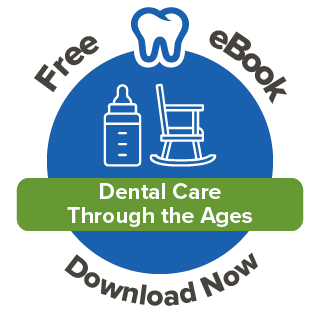By Kate Ranta on Oct 14, 2014 @ 04:43 PM
It's a bright sunny day, the air is filled with the sound of kids’ laughter and the sizzle of the grill. Amid the kid's games and adults' merriment, a howl disrupts the joy - a young boy has tripped during a game of tag, chipping a tooth. Meanwhile, across the yard, an adult winced as he bit into a corn cob, feeling an unexpected crunch that signaled a similar fate. Whether through playful antics or a simple bite, chipped teeth can happen to anyone, turning a day of fun into an unexpected dental dilemma.
Now what?
For adults, this can be a moment of panic, thinking about the discomfort and the potential dental bills. For kids, it might be a mix of fear, pain, and curiosity about what happens next. Here's what you should do:

- Rinse Your Mouth: Gently rinse with warm salt water to clean the area and remove any loose debris.
- First Aid: If it is bleeding, apply pressure to the area with gauze to slow the flow. Apply a cold compress to the outside of your mouth to help minimize swelling.
- Pain Management: Take over-the-counter pain relief medication to help with any pain and discomfort.
- Protect the Tooth: If there's a sharp edge, cover it with dental cement, wax paraffin, or even sugarless gum to protect your mouth from cuts.
- Food: Stick to soft foods to avoid further damage and irritation.
Once you’re able to see the dentist, your tooth will likely be repaired in one of the following ways:
Small Chips
Filling or Bonding: For minor chips, a filling or bonding can restore your tooth's appearance and function. A small chipped piece of tooth enamel can be fixed with a filling. If the chip is on the front teeth, the dentist usually performs a procedure called bonding. This uses a tooth-colored material to match your natural teeth. The dentist will use adhesive and bonding substances to bond the material to your tooth. They will then shape the material to look like your tooth, and then use an ultraviolet light to harden the material.
Medium Chips
Cap or Crown: For more significant damage, a cap or crown might be necessary. The dentist may choose to file down part of the remaining tooth and cover it with a tooth-shaped cap or a crown. These are designed to protect the tooth and improve appearance and can be made from various materials, each with its own benefits. Permanent crowns can be made from many different substances, including metal, porcelain fused to metal, resin and ceramic. All have different benefits. Metal crowns are the strongest. Porcelain and resin look nearly identical to the original tooth.
Large Chips
Root Canal: A root canal procedure is necessary when the pulp of the tooth becomes exposed. This involves the removal of the infected or damaged pulp tissue from within the tooth, followed by thorough cleaning and disinfection of the root canals, followed by a crown or cap to protect the tooth and help in maintaining the tooth's strength and appearance.
For both adults and kids, the key takeaway is to address a chipped tooth as soon as possible. You don’t want to let a chipped tooth go without attention for too long. Delaying treatment can lead to further damage or even tooth loss. So, whether it's your smile at stake, or a little one's, remember that quick action and professional help are essential.





comments